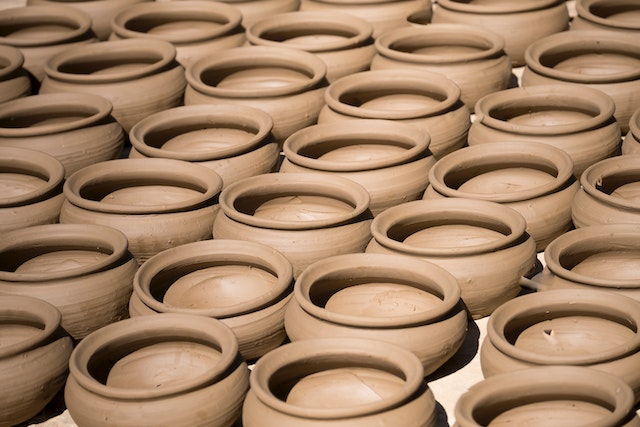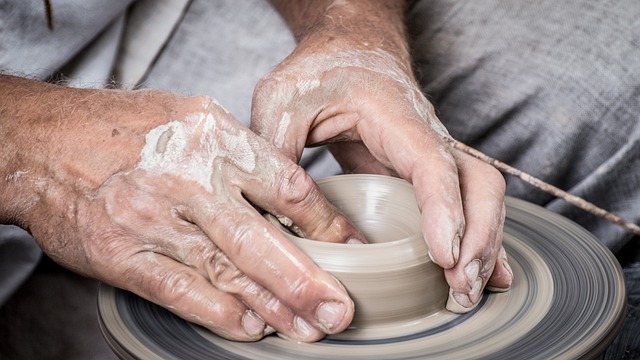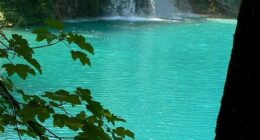Mud has been utilized in traditional building techniques like adobe houses or cob structures due to its abundance and malleability. Clay, on the other hand, has played a significant role in pottery making due to its ability to hold shape when molded.
What is mud ?

Mud is a mixture of water and various combinations of soil, silt, clay, and organic matter. It has a wet, soft, and malleable consistency, making it a common natural substance found in wetlands, riverbanks, and after rainfall. Mud plays ecological roles and has practical uses in construction and agriculture.
What is clay?
Clay is a versatile natural material that has been used for centuries by civilizations around the world. Clay is composed of fine particles that are derived from the weathering and erosion of rocks. These particles are extremely small, much smaller than sand or silt.
Mud Vs. Clay – Key differences
Composition
- Mud: Mud is a mixture of soil, silt, clay, and water. It has varying proportions of these components, leading to its wet and soft texture.
- Clay: Clay is a type of soil composed mainly of very fine particles, specifically clay minerals. It has a smooth, dense, and often sticky texture.
Texture
- Mud: Mud is typically wet, soft, and malleable, with a texture that can range from loose and runny to thick and sticky.
- Clay: Clay has a dense, compact texture that becomes hard when dried. It can be shaped when wet but retains its form when dry.
Uses
- Mud: Mud is not typically used as a building material but is used in applications like mud baths, pottery, and some types of construction for adobe bricks.
- Clay: Clay is widely used in ceramics, pottery, brick-making, and as a building material for earthen structures like adobe houses.
Water Content
- Mud: Mud has a higher water content, making it flowable and less stable when wet.
- Clay: Clay retains less water, and when dry, it hardens and becomes less susceptible to erosion.
Erosion
- Mud: Mud is highly susceptible to erosion and can easily wash away with water or wind.
- Clay: Clay is more resistant to erosion due to its compact nature, especially when dry.
Consistency
- Mud: Mud has a variable consistency and can change rapidly with changes in moisture content.
- Clay: Clay maintains a consistent texture and can be molded when wet and retains its shape when dry.
The key differences between mud and clay lie in their composition, texture, uses, water content, susceptibility to erosion, and consistency. Clay is a specific type of fine-grained soil with distinct properties, while mud is a broader term referring to a mixture of soil, silt, clay, and water with a more fluid texture.
Uses of Mud and Clay in Construction and Art

Uses of Mud in Construction and Art
- Adobe Construction: Mud is a key component in adobe construction, where it is mixed with straw and used to make bricks or blocks. These are then sun-dried or baked to create sturdy, natural buildings.
- Cob Construction: Cob is a building technique that uses a mixture of mud, straw, and sometimes other natural fibers to create walls and structures. It’s a sustainable and ancient method.
- Mud Plaster: Mud can be used as a plaster for coating walls, both interior and exterior, providing a natural and rustic finish.
- Mud Sculptures: Artists use mud to create temporary sculptures or installations in various art forms, such as earthworks and environmental art.
- Pottery and Ceramics: While clay is the primary material for pottery, mud can be used in some primitive pottery techniques or for creating temporary sculptures.
Uses of Clay in Construction and Art
- Brick Making: Clay is a fundamental material for making bricks, which are used in construction for buildings and structures worldwide.
- Ceramics: Clay is the primary material for creating ceramics, including pottery, porcelain, and clay sculptures. It’s fired at high temperatures to create durable and functional art.
- Sculpture: Artists use clay for sculpting three-dimensional artworks, which can be fired and glazed for permanence or used in temporary installations.
- Tile Production: Clay is used to make various types of tiles, including floor tiles, roof tiles, and decorative tiles, for construction and interior design.
- Clay Plaster: Similar to mud plaster, clay plaster is used as a natural and eco-friendly finish for walls and ceilings in modern construction.
- Clay Jewelry: Artists and artisans use clay to create unique jewelry pieces through techniques like pottery and clay molding.
Image Credits
Featured Image By – Lubos Houska from Pixabay
Image 1 By – 12019 from Pixabay
Image 2 By – Photo by Quang Nguyen Vinh








